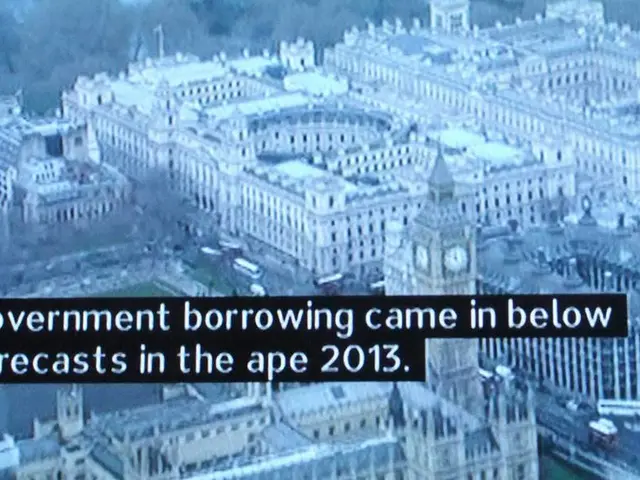Egyptian currency depreciates, reaching a rate of 26.49 per US dollar.
Egyptian Pound's Exchange Rate Faces Challenges Amidst Global Economic Uncertainties
The Egyptian pound's exchange rate with the US dollar has been a topic of concern in 2025, with several factors contributing to its fluctuation.
The significant undervaluation of the Egyptian pound, as indicated by the 2025 Big Mac Index, is one such factor. The pound is estimated to be undervalued by approximately 40-58%, pressuring the exchange rate.
Central Bank of Egypt (CBE) policies also play a crucial role. The CBE has kept interest rates high at 24% to stabilize the EGP, with plans for gradual rate cuts later in the year. The bank actively manages capital flows and encourages foreign investment in government securities, supporting currency stability.
Inflation dynamics and fiscal reforms pose risks to the pound's stability. While a slowdown in inflation supports the pound, possible VAT reforms and fuel price hikes could reignite inflation, potentially leading the CBE to revert to tighter monetary policy.
Geopolitical risks, such as regional conflicts or trade tensions, can cause sudden currency depreciation due to heightened uncertainty and capital flight. Egypt's credit ratings and investor perceptions also influence foreign investment flows, with the country's non-investment grade ratings implying elevated credit risk.
The US dollar's strength and global currency volatility also impact the EGP. The dollar has weakened about 10% against a basket of currencies in early 2025, contrary to expectations, largely driven by capital flows. This unpredictability impacts emerging market currencies such as the EGP.
Recently, the Egyptian pound depreciated to 26.49 to the dollar on Wednesday, marking its biggest one-day move since October 27. This depreciation followed the discontinuation of the use of a system of compulsory letters of credit for importers, which had been enforced in February, and Egypt's seeking of a $3 billion financial rescue plan from the International Monetary Fund (IMF) since March due to the financial fallout from the Ukraine conflict and a global currency shortage.
In response to the foreign exchange liquidity issues, Goldman Sachs analyst Farouk Soussa stated that the resolution depends on the inflow of foreign exchange in the near term. Soussa also emphasized the need to align the exchange rate, which requires clearing the foreign exchange backlog and ensuring future demand for foreign exchange is met.
Underground market currency dealers continued to buy dollars for 29 pounds each on the black market on Wednesday, despite the devaluation. To boost foreign exchange inflows, Egypt's two main state financial institutions, Banque Misr and National Bank of Egypt, announced on Wednesday they are offering 1-year savings certificates with a return of 25%, a move typically associated with a decline.
In summary, the Egyptian pound's exchange rate is shaped by a combination of domestic macroeconomic policies, inflation and fiscal reforms, geopolitical risks, credit rating-related investor confidence, and global USD movement driven by capital flows. The CBE's active management aims to stabilize the currency despite large structural undervaluation and external pressures.
Businesses and financiers closely monitor the Egyptian pound's exchange rate, given its instability amidst global economic uncertainties. The variation in the exchange rate is influenced by the Central Bank of Egypt's (CBE) policies, inflation dynamics, geopolitical risks, the US dollar's strength, and the impact of foreign investment on the currency.








